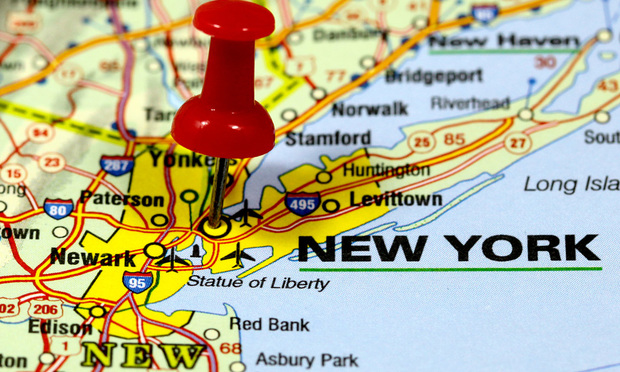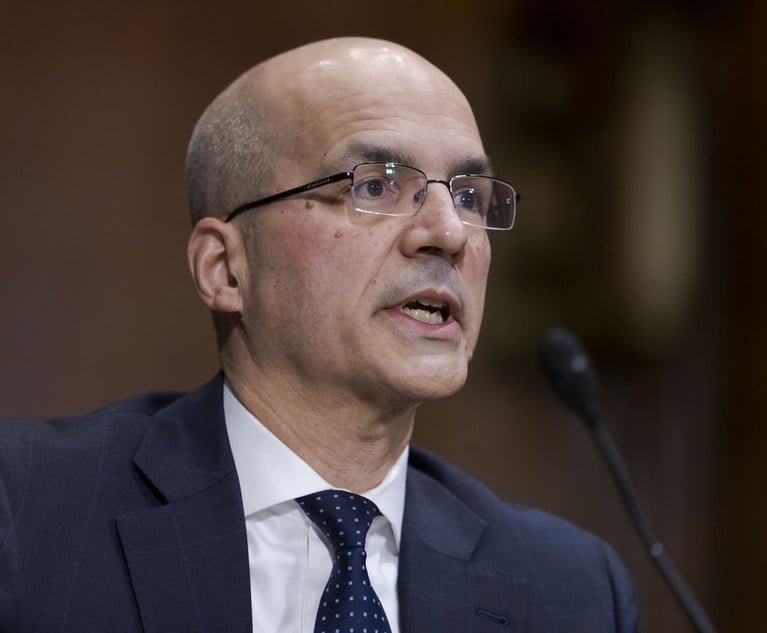Social Distancing From the Home State: Domicile Planning Opportunities in Light of the Ongoing Pandemic
How should New Yorkers (and other urbanites) who are currently living elsewhere due to the pandemic handle their income taxes? There are important distinctions between "residences" and "domiciles" and potential tax savings to be had if changes become permanent. There is also a fair amount of scrutiny for those who keep ties to NYC, but live elsewhere. It's important for individuals to be aware of what the auditing process might entail before they make permanent changes.
November 05, 2020 at 11:00 AM
8 minute read
 The ongoing pandemic has spurred an exodus from dense, metropolitan areas in high income tax jurisdictions, such as New York City. With the requirements coupled with the ability for business owners and employees to work remotely, it remains to be seen whether urban populations will return to pre-pandemic levels.
The ongoing pandemic has spurred an exodus from dense, metropolitan areas in high income tax jurisdictions, such as New York City. With the requirements coupled with the ability for business owners and employees to work remotely, it remains to be seen whether urban populations will return to pre-pandemic levels.
Many of those who leave metropolitan areas for a new state in the pandemic do not intend to remain in the new state indefinitely. For this reason, they are effectuating a temporary change in "residency," rather than "domicile." Residency and domicile are distinct concepts for income tax purposes. While an individual may have more than one residence, she may only have one domicile. The New York taxing authorities have generally referred to an individual's domicile as "the place you intend to have as your permanent home" or "the place you intend to return to after being away (as on vacation, business assignments, educational leave, or military assignment)." A domicile continues until an individual abandons it and moves to a new jurisdiction with the intent to make a permanent home there.
Understanding the effect of being domiciled in a jurisdiction is critical to navigating income and transfer tax planning, because domicile forms the basis for the imposition of tax. Domiciliaries are generally subject to income tax on worldwide income, whereas nonresidents are subject to tax only with respect to state-sourced income. For this reason, taxing authorities in high income tax states are often viewed as aggressively auditing taxpayers on the basis of domicile. New York state may tax an individual as a resident on two grounds: She is a domiciliary or she meets the statutory residence test under the residence test for a non-domiciliary. In addition, New York City imposes a city-level income tax on residents.
This content has been archived. It is available through our partners, LexisNexis® and Bloomberg Law.
To view this content, please continue to their sites.
Not a Lexis Subscriber?
Subscribe Now
Not a Bloomberg Law Subscriber?
Subscribe Now
NOT FOR REPRINT
© 2025 ALM Global, LLC, All Rights Reserved. Request academic re-use from www.copyright.com. All other uses, submit a request to [email protected]. For more information visit Asset & Logo Licensing.
You Might Like
View All
'A Shock to the System’: Some Government Attorneys Are Forced Out, While Others Weigh Job Options
7 minute read
'Serious Legal Errors'?: Rival League May Appeal Following Dismissal of Soccer Antitrust Case
6 minute read
How Some Elite Law Firms Are Growing Equity Partner Ranks Faster Than Others
4 minute read
Law Firms Mentioned
Trending Stories
- 1ACC CLO Survey Waves Warning Flags for Boards
- 2States Accuse Trump of Thwarting Court's Funding Restoration Order
- 3Microsoft Becomes Latest Tech Company to Face Claims of Stealing Marketing Commissions From Influencers
- 4Coral Gables Attorney Busted for Stalking Lawyer
- 5Trump's DOJ Delays Releasing Jan. 6 FBI Agents List Under Consent Order
Who Got The Work
J. Brugh Lower of Gibbons has entered an appearance for industrial equipment supplier Devco Corporation in a pending trademark infringement lawsuit. The suit, accusing the defendant of selling knock-off Graco products, was filed Dec. 18 in New Jersey District Court by Rivkin Radler on behalf of Graco Inc. and Graco Minnesota. The case, assigned to U.S. District Judge Zahid N. Quraishi, is 3:24-cv-11294, Graco Inc. et al v. Devco Corporation.
Who Got The Work
Rebecca Maller-Stein and Kent A. Yalowitz of Arnold & Porter Kaye Scholer have entered their appearances for Hanaco Venture Capital and its executives, Lior Prosor and David Frankel, in a pending securities lawsuit. The action, filed on Dec. 24 in New York Southern District Court by Zell, Aron & Co. on behalf of Goldeneye Advisors, accuses the defendants of negligently and fraudulently managing the plaintiff's $1 million investment. The case, assigned to U.S. District Judge Vernon S. Broderick, is 1:24-cv-09918, Goldeneye Advisors, LLC v. Hanaco Venture Capital, Ltd. et al.
Who Got The Work
Attorneys from A&O Shearman has stepped in as defense counsel for Toronto-Dominion Bank and other defendants in a pending securities class action. The suit, filed Dec. 11 in New York Southern District Court by Bleichmar Fonti & Auld, accuses the defendants of concealing the bank's 'pervasive' deficiencies in regards to its compliance with the Bank Secrecy Act and the quality of its anti-money laundering controls. The case, assigned to U.S. District Judge Arun Subramanian, is 1:24-cv-09445, Gonzalez v. The Toronto-Dominion Bank et al.
Who Got The Work
Crown Castle International, a Pennsylvania company providing shared communications infrastructure, has turned to Luke D. Wolf of Gordon Rees Scully Mansukhani to fend off a pending breach-of-contract lawsuit. The court action, filed Nov. 25 in Michigan Eastern District Court by Hooper Hathaway PC on behalf of The Town Residences LLC, accuses Crown Castle of failing to transfer approximately $30,000 in utility payments from T-Mobile in breach of a roof-top lease and assignment agreement. The case, assigned to U.S. District Judge Susan K. Declercq, is 2:24-cv-13131, The Town Residences LLC v. T-Mobile US, Inc. et al.
Who Got The Work
Wilfred P. Coronato and Daniel M. Schwartz of McCarter & English have stepped in as defense counsel to Electrolux Home Products Inc. in a pending product liability lawsuit. The court action, filed Nov. 26 in New York Eastern District Court by Poulos Lopiccolo PC and Nagel Rice LLP on behalf of David Stern, alleges that the defendant's refrigerators’ drawers and shelving repeatedly break and fall apart within months after purchase. The case, assigned to U.S. District Judge Joan M. Azrack, is 2:24-cv-08204, Stern v. Electrolux Home Products, Inc.
Featured Firms
Law Offices of Gary Martin Hays & Associates, P.C.
(470) 294-1674
Law Offices of Mark E. Salomone
(857) 444-6468
Smith & Hassler
(713) 739-1250






